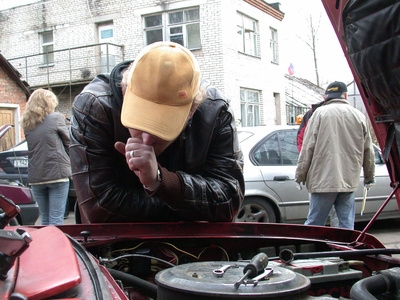
Today's modern cars have no resemblance to cars from 30 years ago when it comes to repairs. Modern repair diagnosis is performed by asking the car's computer what may be wrong. Obviously the car doesn't talk back like K.I.T.T. from the 1980s Knight Rider TV show. Instead, a translator is necessary to understand the codes the car system tracks. This code reader allows a mechanic or a car owner to diagnose the car based on a series of codes.
The language car repair uses is On Board Diagnostics language, better known as OBD. This consists of a series of codes, one for every fault or sensor trigger that may occur in a car. Naturally, cars are now made with hundreds of sensors to produce these codes when a problem or aberration occurs. The codes can be read and understood by using an engine code scanner, ranging from $60 for a personal reader to $300 for a professional unit.
One issue that modern car owners are learning is that code diagnosis is not perfect. Many times a car gives a code warning that may be an error. For instance, a bad throttle body can cause error signals in an O2 sensor, a mass air flow sensor, and even a fuel pressure sensor yet none of these parts may have actual problems.
If codes stayed in a car memory permanently it would eventually run out of data space. A code that is not persistent three times in a row stops causing the "check engine" indicator to turn on. A code reading also will eventually fall off the memory after signaling 40 to 50 times, depending on the car model.